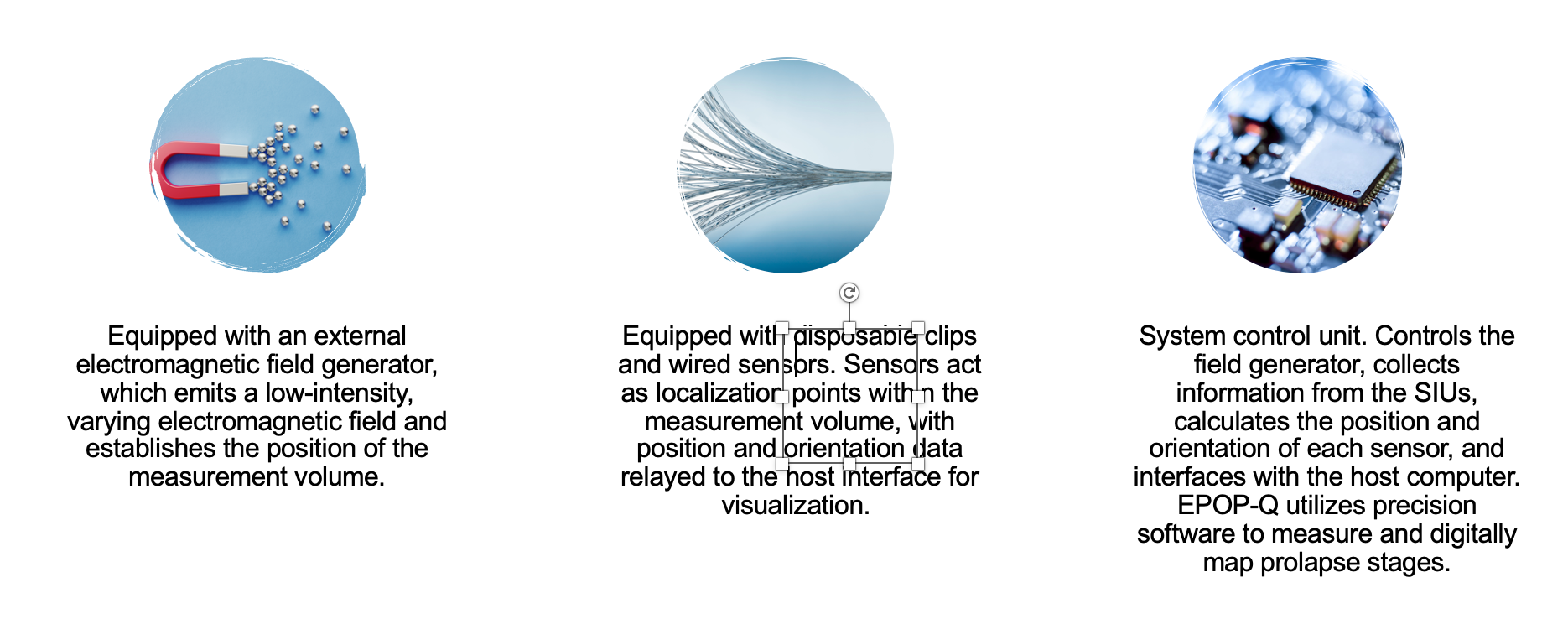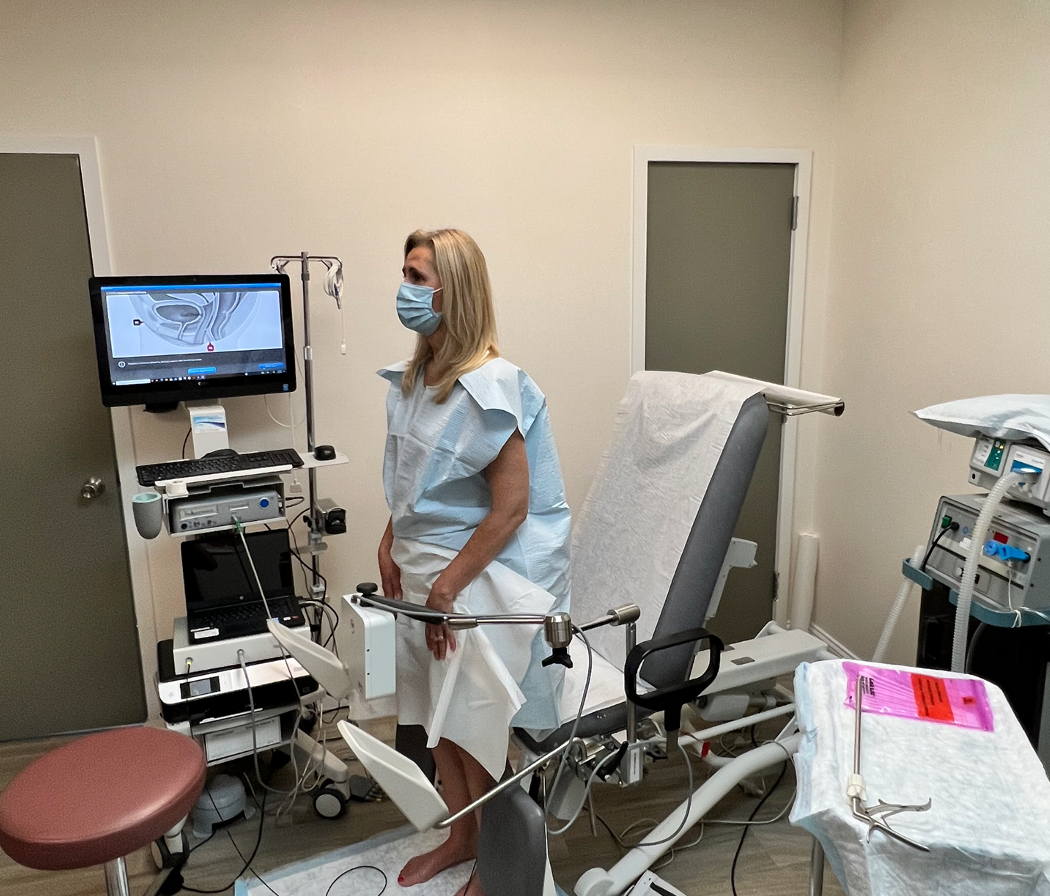
Introduction to ePOP-Q
ParsiMed is developing a technological innovation to address the challenge of accurately assessing POP. Our technology platform, the ‘Electronic Pelvic Organ Prolapse Quantification System’ (ePOP-Q) offers a standardized, digital means for documenting,comparing, and communicating clinical findings in pelvic floor disorders such as POP. The ePOP-Q uses intravaginally-positioned sensors coupled with external equipment to measure the movement of internal organs during a pelvic exam. ParsiMed is developing a device that performs electronic POP-Q measurements and generates digital records of results in real-time. This allows for monitoring of emerging POP cases and drives early diagnosis of POP.
The major advantages of our technology are as follows:
- Our test can be performed in standing position where currently POP-Q exam can only be performed when patient is on her back, which can be highly unrepresentative of the prolapse true status.
- Our software’s depth of analysis is <1mm with results in accurate staging of POP and can create a digital image of prolapse
- Our system will be compatible and easily integrated with major EHR platforms and vendors.
Electronic Pelvic Organ Prolapse Quantification (ePOP-Q) examination is a device is consistent of 3 components:

As the patient performs pelvic maneuvers, data is relayed via electromagnetic sensors to a software component which generates an image of internal features using a collection of tracking markers placed on anatomy reference locations with anatomical features interest. Spatial tracking is used to record relative movements of the markers, allowing quantitative measurement of organ prolapse in millimeters regardless of a patient’s position or anatomy. Our patented platform is examiner-dependent and site-specific, providing a system for describing, quantifying, and staging pelvic support in women
Our prototype system includes sensors, an electromagnetic field generator, and control hardware. As the patient performs pelvic maneuvers, data is relayed via electromagnetic sensors to a software component which generates an image of internal features using a collection of tracking markers placed on anatomy reference locations with anatomical features of interest. Spatial tracking is used to record relative movements of the markers, allowing quantitative measurement of organ prolapse in millimeters regardless of a patient’s position or anatomy. The control hardware performs all necessary actions to determine location information of each sensor for a given instance, assuming that the sensors are within reading range of the system. An external system may query sensor location information via a communication port through either RS232 or USB, using a software application programming interface (API) provided by the tracking hardware manufacturer.
A major advantage of the device is its ability to measure and stage Pelvic Organ Prolapse (POP) in a standing position, which is more reflective of how the patient experiences symptoms of POP. The key advantages of an ePOP-Q device are to allow a computer
assisted objective, accurate, analysis of the condition and to create an electronic record of the prolapse measurement.
